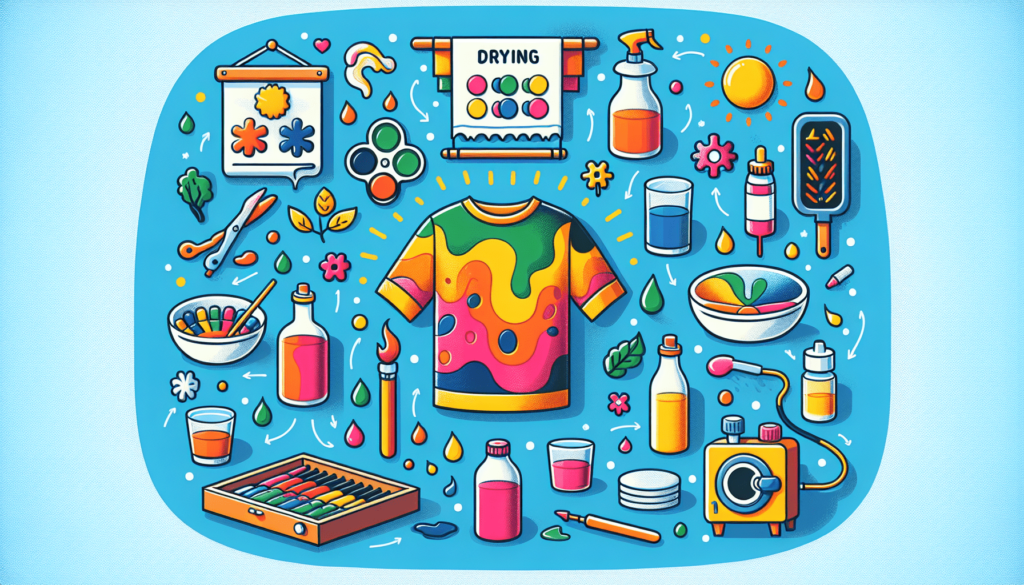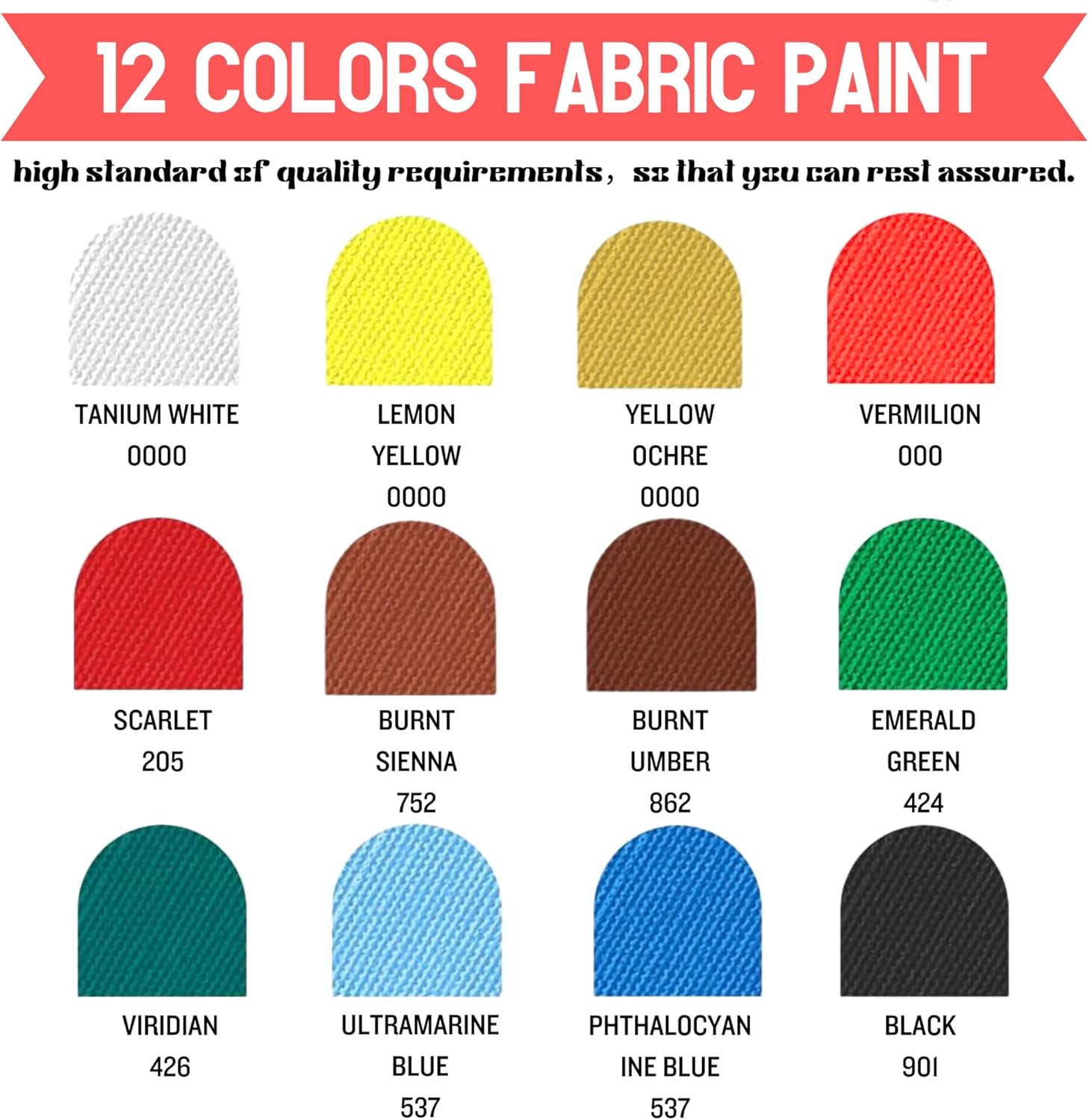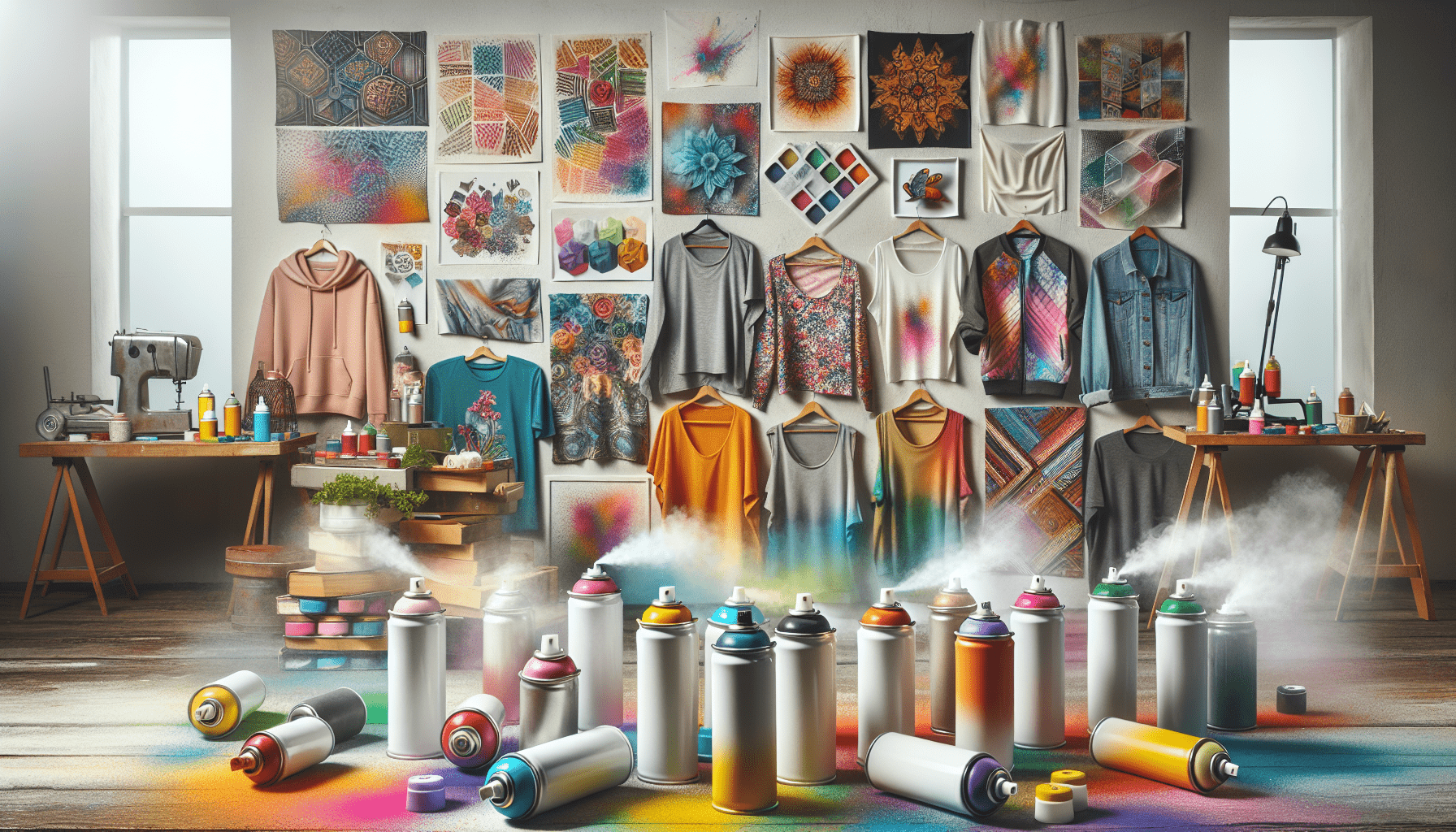Fabric paint is a wonderful way to add color and personalization to your clothing, home decor, and other fabric items. However, it’s crucial to understand the drying time of fabric paint to ensure your creations come out as vibrant and long-lasting as possible. In this article, we will explore the factors that influence the drying time of fabric paint and provide valuable insights on how to optimize this process, allowing you to achieve professional-quality results every time you pick up your paintbrush. So, let’s delve into the intricate world of fabric paint drying and unlock the secrets to crafting durable and stunning designs on fabric.
Factors Affecting Drying Time of Fabric Paint
Fabric paint is a popular choice for adding color and designs to textiles. However, the drying time of fabric paint can vary depending on several factors. Understanding these factors is important to ensure successful and efficient drying of fabric paint. In this article, we will explore the different factors that affect the drying time of fabric paint and provide recommendations on how to speed up the drying process.
Type of Fabric
The type of fabric plays a significant role in determining the drying time of fabric paint. Some fabrics absorb moisture more quickly, while others may require more time to dry. It is essential to consider the fabric type before applying fabric paint to achieve satisfactory results.
Natural Fabrics
Natural fabrics, such as cotton, linen, and silk, allow for better absorption and evaporation of moisture. These fabrics tend to dry faster compared to other fabric types. When painting on natural fabrics, it is important to consider the specific paint type and application technique to ensure optimal drying.
Blended Fabrics
Blended fabrics, which are a combination of natural and synthetic fibers, can have varying drying times depending on the ratio of natural and synthetic materials. Blended fabrics may not absorb moisture as quickly as natural fabrics, resulting in longer drying times. It is recommended to choose fabric paints and application techniques suitable for blended fabrics to ensure proper drying.
Synthetic Fabrics
Synthetic fabrics, such as polyester and nylon, tend to have longer drying times due to their low absorbency. These fabrics are often water-resistant, making it more challenging for fabric paint to penetrate the fibers and dry efficiently. proper paint selection and application techniques are essential when working with synthetic fabrics to avoid extended drying periods.
Type of Paint
The type of fabric paint used can significantly impact drying time. There are various types of fabric paints available, each with its own unique properties and drying characteristics.
Water-Based Fabric Paint
Water-based fabric paints are popular due to their ease of use and versatility. These paints are typically absorbed into the fabric fibers, allowing for faster drying times. Water-based fabric paints are suitable for most fabric types and can provide vibrant and long-lasting colors. They are an excellent choice for projects that require quick drying.
Acrylic Fabric Paint
Acrylic fabric paints contain acrylic polymers, which provide excellent adhesion and durability. These paints adhere well to various fabric types, including natural and synthetic fabrics. Acrylic paints offer a range of drying time options, depending on the brand and formulation. Some acrylic fabric paints dry quickly, while others may require longer drying periods, especially when thicker layers are applied.
Oil-Based Fabric Paint
Oil-based fabric paints are formulated with oil as the base, making them slower to dry compared to water-based and acrylic paints. These paints often require air drying for a longer period or heat setting to cure properly. Oil-based fabric paints are more suitable for projects where extended drying times are acceptable and when a glossy or textured finish is desired.
Application Technique
The application technique used when applying fabric paint can influence the drying time and overall quality of the painted surface. Different application techniques result in varying paint thicknesses and evenness of coverage, affecting drying time.
Brush Application
Using a paintbrush to apply fabric paint allows for more control and precision. However, brush application may result in thicker paint layers, which can increase drying time. It is important to apply paint evenly and avoid excessive layering to promote faster drying.
Spray Application
spray application of fabric paint provides an even and thin layer of paint. This technique can help achieve faster drying times as the paint is evenly distributed over the fabric’s surface. However, it is crucial to practice proper spraying techniques to avoid oversaturation and ensure even coverage.
Stencil Application
Stencil application involves using stencils to create intricate designs on fabric. This technique often requires using a brush or sponge to apply paint within the stencil’s boundaries. Drying time can vary depending on the thickness of paint applied and the complexity of the design. Careful attention should be given to ensure the paint does not bleed under the stencil, which can affect drying time and the final result.
Stamp Application
Stamp application involves using stamps to create patterns or images on fabric. This technique can provide quick and precise application of fabric paint. However, drying time can be influenced by the amount of paint applied and the size of the stamp used. Lightly pressing the stamp onto the fabric can help prevent excessive paint and promote faster drying.
Environmental Conditions
The surrounding environmental conditions can significantly impact the drying time of fabric paint. Factors such as temperature, humidity, and air circulation play crucial roles in the evaporation of moisture from the fabric and paint.
Temperature
Higher temperatures generally promote faster drying times, as heat helps accelerate the evaporation of moisture. It is recommended to keep the drying area at a moderate temperature, avoiding extreme heat that can potentially damage the fabric or affect the paint’s quality. A warm and well-ventilated room is ideal for efficient drying.
Humidity
High humidity levels can impede the drying process by slowing down moisture evaporation. Excessive humidity can cause fabric paint to remain tacky or wet for an extended period. It is advisable to avoid painting in humid conditions and consider using dehumidifiers or air conditioning to reduce humidity levels in the drying area.
Air Circulation
Proper air circulation is crucial for efficient drying of fabric paint. Good airflow helps promote moisture evaporation from both the fabric and the paint. Ventilation fans or open windows can aid in circulating air and reducing drying time. Additionally, avoiding overcrowding of painted fabrics allows for better air circulation, helping paint dry more quickly.
Recommended Drying Time for Different Fabric Paints
Each type of fabric paint has its own recommended drying time to ensure the best results. Adhering to the manufacturer’s guidelines and considering the specific fabric type and environmental conditions is essential.
Water-Based Fabric Paint
Water-based fabric paints generally dry within a few hours or overnight, depending on the fabric type and the thickness of the paint layers. It is recommended to give the painted fabric ample time to dry completely before handling or wearing. For projects with multiple layers or thicker paints, allowing 24 hours of drying time is advised.
Acrylic Fabric Paint
Drying times for acrylic fabric paints can vary depending on the brand and formulation. Some acrylic paints dry to the touch within hours, while others may require 24-48 hours to fully dry. It is important to follow the manufacturer’s recommendations for drying time and avoid premature handling of the painted fabric.
Oil-Based Fabric Paint
Oil-based fabric paints typically have longer drying times compared to water-based and acrylic paints. These paints may require 24-48 hours or longer to air dry fully. Alternatively, heat setting can be used to accelerate the drying and curing process. Follow the manufacturer’s instructions for heat setting, as excessive heat can damage certain fabric types.

Ways to Speed Up the Drying Process
While it is essential to allow sufficient drying time for fabric paint, there are ways to expedite the drying process without compromising the quality of the painted fabric.
Use a Fan or Hairdryer
Using a fan or a hairdryer on a low or cool setting can help promote air circulation and speed up drying. Direct the airflow towards the painted fabric, keeping a reasonable distance to prevent overheating or blowing the paint off. Be cautious when using a hairdryer on synthetic fabrics, as excessive heat can damage or melt the fibers.
Increase Temperature
Increasing the ambient temperature in the drying area can accelerate the drying process. However, it is crucial to avoid extreme heat that can damage or shrink the fabric. Modest increases in temperature, particularly in well-ventilated rooms, can help evaporate moisture more quickly and reduce drying time.
Reduce Humidity
Lowering humidity levels in the drying area can significantly impact drying time. Dehumidifiers or air conditioning can be used to decrease humidity and create a more favorable drying environment. Maintaining an optimal humidity range promotes faster and more efficient paint drying.
Optimal Air Circulation
Improve air circulation by using fans or opening windows to facilitate the evaporation of moisture. Placing painted fabrics on a mesh or elevated surface allows air to flow on both sides, aiding in faster drying. Avoid stacking or overcrowding painted fabrics, as it can hinder proper air circulation and prolong drying time.
Precautions While Waiting for Fabric Paint to Dry
While waiting for fabric paint to dry, it is important to take certain precautions to avoid accidental smudging or damage to the painted surface.
Avoid Touching the Wet Paint
Touching wet fabric paint can smear or smudge the design and disrupt the drying process. It is crucial to resist the temptation to touch the painted fabric until it is completely dry. If necessary, use gloves or carefully handle the fabric by the edges to minimize contact with the paint.
Protect the Painted Surface
To prevent accidental smudging or transfer of wet paint, it is advisable to cover the painted surface with a clean, lightweight cloth or parchment paper. This protective layer helps shield the paint from accidental contact, allowing it to dry undisturbed.
Give Sufficient Drying Time
Patience is key when waiting for fabric paint to dry. Rushing the drying process can lead to undesirable results, such as smearing or incomplete adhesion. It is essential to give the painted fabric sufficient drying time as recommended by the fabric paint manufacturer. Adequate drying time ensures the paint sets properly and achieves a durable finish.

Curing Time for Fabric Paint
Once fabric paint has dried, it is often necessary to cure the paint to enhance its durability and washability. The curing process involves further bonding the paint to the fabric fibers, ensuring it withstands washing and wear.
Air Drying
Air drying refers to allowing the paint to cure naturally over time without using additional heat. Depending on the fabric paint type and brand, air drying can take several days or up to a week. During this curing period, it is important to avoid washing or bending the fabric excessively to allow the paint to fully adhere. Follow the manufacturer’s recommendations for specific air drying times.
Heat Setting
Heat setting is a common method used to expedite the curing process of fabric paint. It involves applying heat to the painted fabric using an iron, a heat press, or a clothes dryer. Follow the fabric paint manufacturer’s instructions for heat setting, as different paint types and brands may have varying requirements. Heat setting helps ensure the paint bonds with the fabric, resulting in increased washability and longevity.
Summary
Understanding the factors affecting the drying time of fabric paint is essential for achieving successful and efficient outcomes in textile projects. Factors such as the type of fabric, type of paint, application technique, and environmental conditions all play a significant role in the drying process. Choosing the right fabric paint, ensuring proper application techniques, and creating favorable drying conditions are key to achieving desired results.
Importance of knowing drying time lies in the successful completion of fabric painting projects. By considering the fabric type, paint type, application technique, and environmental conditions, you can make informed decisions to ensure efficient drying and desirable outcomes.
Choosing the right fabric paint for your project is crucial. Water-based fabric paints are ideal for quick-drying projects, while acrylic fabric paints offer a balance between drying time and durability. Oil-based fabric paints are a suitable choice for specific projects requiring longer drying and curing times.
Factors influencing drying time include the type of fabric, type of paint, application technique, and environmental conditions such as temperature, humidity, and air circulation. Understanding and managing these factors can help you achieve efficient and satisfactory drying of fabric paint.
To speed up the drying process, you can use fans or hairdryers, increase temperature moderately, reduce humidity, and promote optimal air circulation. These techniques can aid in faster evaporation of moisture and promote quicker drying of fabric paint.
While waiting for fabric paint to dry, it is important to take precautions to avoid smudging or damaging the painted surface. Avoid touching wet paint, protect the painted surface with a cloth or parchment paper, and allow sufficient drying time as recommended by the fabric paint manufacturer.
Curing time is necessary for enhancing the durability and washability of fabric paint. Air drying and heat setting are two common methods to cure fabric paint. Follow the manufacturer’s instructions for specific curing recommendations based on the fabric paint type and brand.
In conclusion, understanding the drying time of fabric paint and implementing appropriate techniques can lead to successful and efficient fabric painting projects. Consider the fabric type, paint type, application technique, and environmental conditions to achieve optimal drying times and desirable results.



